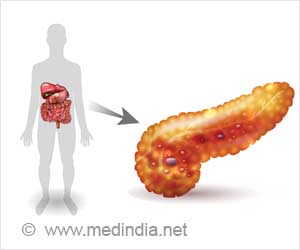A team of researchers have determined the structure of a protein, which is considered to be the possible target.
A team of researchers have determined the structure of a protein, which is considered to be the possible target for the development of drugs to treat diabetes.
The researchers have discovered the three-dimensional structure of a protein MitoNEET, which was previously identified as a spot where diabetes drugs could operate.The discovery makes it possible to design small molecules that interact with it and modify its function. The researchers say that MitoNEET has a novel three-dimensional structure that makes it a particularly interesting candidate for the design of innovative compounds that can bind to it.
“This is the first time that a protein like this has ever been found,” said Patricia Jennings, a professor in UCSD’s department of Chemistry and Biochemistry who led the study along with Mark Paddock, a project scientist in UCSD’s Physics department.
“It is a brand new structure, a unique beast, which makes it an exciting target for structure-based drug design. We are grateful about the highly collaborative spirit of the UCSD community that brought such diverse expertise and helped us tackle such a complex project,” Jennings added.
“Our work may provide a basis for the design of newer diabetes drugs that have potentially greater specificity and fewer side effects than existing ones,” added Paddock.
Following the initial work of co-authors Sandra Wiley, Anne Murphy and Jack Dixon at UCSD’s School of Medicine, and in collaboration with Herbert Axelrod and Aina Cohen at the Stanford Synchrotron Radiation Laboratory and Rachel Nechushtai at the Hebrew University of Jerusalem, also co-authors on the paper, the team determined that mitoNEET is an iron-sulphur protein.
Advertisement
However, the finding by Jerry Colca, presently at Metabolic Solutions Development Company in Kalamazoo, Michigan, that the thiazolidinediones—the class of diabetes drugs of which Actos is a member—bind to mitoNEET indicated a possible mechanism involving mitoNEET. Colca’s finding inspired the UCSD-led study, which suggests that Actos and similar drugs may protect cells from the damaging effects of free iron by keeping the iron-sulphur cluster attached to mitoNEET.
Advertisement
“MitoNEET may be an example of an ever increasing group of proteins found to have more than one function. I think we are at the beginning of what is sure to be an interesting and biologically important puzzle.” said Paddock.
“It is intriguing to see these different pieces coming together. There is growing evidence that mitochondrial dysfunction and compromised oxidative capacity is a problem in diabetes. MitoNEET has iron-sulphur clusters that can transfer electrons, and it binds insulin-sensitizing drugs. Now that we know the structure and physical properties of the protein we can use this knowledge for drug studies and studies of biological function,” explained Jennings.
The team plans to use the new structural information for designing more sophisticated experiments to test function and structure-based drug design to create drugs that interact better with mitoNEET.
“This work is a great example of the possible synergies of a multidisciplinary and multinational effort. Instrumental in these results were the combined efforts of the US and Israeli teams,” said Paddock.
The study is published in the September 4 issue of the journal Proceedings of the National Academy of Sciences.
Source-ANI
JAY/S











